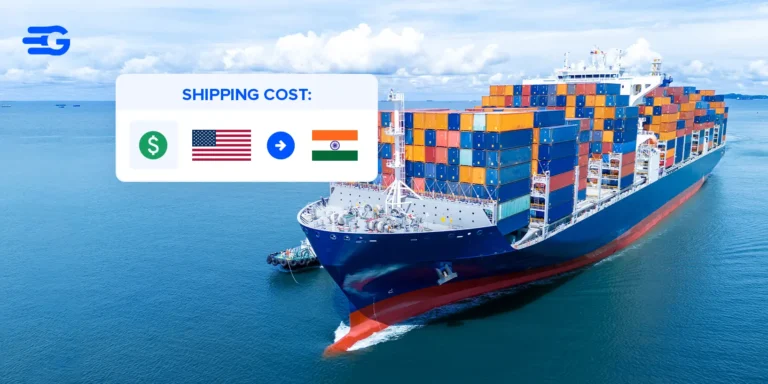S&OP KPIs: Evaluating Effectiveness, Leveraging Effort
Most companies either track nothing meaningful, measure everything that moves, or focus on vanity metrics that make meetings look productive without driving real decisions. Lack of appropriate data is often one of the reasons for the S&OP process failing, with “Am I using the right KPIs?” being one of the most common questions.
The solution isn’t more metrics – it’s smarter ones. S&OP KPIs should tell you whether your planning process creates business value, not just busy work. So, let’s explore which metrics matter and how to use them effectively.
What are S&OP KPIs?
S&OP KPIs are the vital signs of your planning process. Think of them as your business health monitor – they tell you whether your monthly planning efforts are actually improving performance or just creating expensive theater.
S&OP is fundamentally about balancing the supply chain triangle of service, cash and cost, thus optimizing shareholder value by maximizing Return On Capital Employed. Your S&OP KPIs should reflect this balance, not just track operational activities.
These metrics need to measure three distinct areas:
- Process Health Indicators: Are your S&OP meetings productive? Do decisions get made and implemented? Are action items completed? Without effective meetings, even perfect data won’t drive improvement.
- Plan Quality Metrics: Are your forecasts accurate enough to base real business decisions on? Do your capacity plans reflect reality? Quality planning forms the foundation for everything else.
- Business Impact Measures: Are you hitting targets that matter to customers and shareholders? Revenue growth, margin improvement, customer satisfaction – the outcomes that justify the S&OP investment.
Whether your strategy focuses on customer intimacy, operational excellence, or product leadership determines which metrics deserve attention. The metrics should match your strategic priorities, not some generic best practice checklist.
10 Essential S&OP KPIs Every Business Should Track
These are the metrics that actually move the needle – each one connects planning activities to business results instead of just generating reports.
- Forecast Accuracy
This measures how close your predictions come to reality.
Calculate it as: 1 – [Absolute value of (Actual sales – Forecast sales) / Actual sales].
Target 90%+ for mature products, 80%+ for new products. Poor forecast accuracy ripples through everything – inventory, production, cash flow. Example: If you forecasted 1000 units but sold 850, your accuracy is 85%.
- Demand Plan Bias
Tracks persistent forecast errors in one direction.
Formula: Sum of (Actual – Forecast) / Number of periods.
Target: Between -4 and +4 over 24 observations to avoid systematic over or under-forecasting. Bias kills trust between sales and operations. Consistent over-forecasting leads to excess inventory. Under-forecasting creates stockouts and angry customers.
- Inventory Turnover Rate
Shows how effectively you convert inventory into sales.
Calculate: Annual Cost of Goods Sold ÷ Average Inventory Value.
Higher turns mean better cash flow and lower carrying costs. If your COGS is $2M and average inventory is $500K, your turnover is 4x annually.
Industry data shows significant variation – with sectors ranging from 2.10x to 10.26x, averaging 5.76x across all industries. This metric tells you if your S&OP decisions make financial sense.
- Supply Plan Adherence
Compares actual production to planned production schedules.
Calculate: (Actual production volume ÷ Planned production volume) × 100.
Low adherence indicates capacity constraints, quality issues, or unrealistic planning assumptions. When supply can’t deliver what S&OP promises, everything else breaks down.
- Stockout Frequency
Counts how often you can’t fulfill customer demand due to inventory gaps.
Calculate: (Number of stockout instances ÷ Total order instances) × 100.
Each stockout represents lost sales, disappointed customers, and planning failure. Track by product category and identify patterns that reveal systematic S&OP problems.
- Cross-Functional Collaboration Score
Measures team alignment across departments.
Calculate through quarterly surveys rating information sharing, conflict resolution, and consensus building on 1-10 scale. Poor collaboration leads to suboptimal S&OP decisions and implementation failures.
- S&OP Meeting Effectiveness
Measures decision closure rate, attendance consistency, and action item completion – process metrics that drive business outcomes.
Calculate: (Decisions made + Actions completed) ÷ (Issues raised + Actions assigned) × 100.
Productive meetings lead to clear decisions. Unproductive meetings waste time and delay necessary changes.
- Plan Stability
Tracks how often plans change between S&OP cycles.
Calculate: (Number of plan changes ÷ Total planned items) × 100.
Some changes reflect market reality. Excessive changes suggest poor initial planning or failure to account for known variables. Stability enables better execution.
- On-Time Delivery Performance
Measures what customers actually experience.
Calculate: (Orders delivered on promised date ÷ Total orders) × 100.
This tracks the percentage of orders delivered when promised. The average OTD rate was around 85% in 2024, so getting above that puts you ahead of most companies. This S&OP KPI shows if your planning teams are being realistic or just telling people what they want to hear. Bad delivery performance usually means someone made promises they couldn’t keep during S&OP planning.
- Financial Plan Variance
Compares actual financial results to S&OP projections.
Calculate: (Actual financial result ÷ Planned financial result) × 100 for revenue, costs, and profitability.
This ultimate S&OP KPI determines whether planning activities translate into business results. Everything else is just operational noise.
Advanced S&OP KPIs for Mature Organizations
Once you’ve mastered the basics, these sophisticated metrics help optimize planning processes that already deliver consistent business results.
- Forecast Value Added (FVA)
Measures value added during forecasting by comparing accuracy before and after each planning activity to determine if that activity improved forecast accuracy.
Calculate: (Baseline forecast accuracy – Modified forecast accuracy) to see if human intervention helps or hurts.
This sophisticated metric helps identify which planning steps actually improve results versus those that just consume time and resources.
- Demand Sensing Accuracy
Measures how quickly you detect real market signals compared to statistical forecasts.
Calculate short-term forecast accuracy (1-4 weeks) versus traditional monthly forecasts.
You can even use real-time data streams to adjust plans faster than traditional monthly cycles allow. This metric tracks short-term responsiveness capabilities.
- Scenario Planning Effectiveness
Mature S&OP organizations utilize advanced analytics tools to calculate scenarios and their business impact in real time.
Calculate: (Actual outcomes falling within planned scenarios ÷ Total scenarios tested) × 100.
This measures how well your planning process prepares for multiple potential futures rather than betting everything on single-point forecasts.
- Consensus Forecast Quality
Evaluates whether cross-functional input actually improves forecast accuracy compared to single-function forecasts. Calculate: Consensus forecast accuracy – individual forecast accuracy. Sometimes group planning creates worse results than individual expertise. This metric reveals when collaboration adds value.
- Supply Chain Resilience Index
Balances operational KPIs like demand satisfaction with financial and environmental indicators including cash flow and CO2 emissions.
Create a composite score weighing operational performance (40%), financial impact (40%), and sustainability metrics (20%).
Common S&OP KPI Mistakes That Waste Time and Money
Here’s what happens when companies get S&OP KPIs wrong – they end up with beautiful dashboards that nobody uses for actual decisions.
| Mistake | Why It Happens | Real Cost |
| Measuring Everything | Fear of missing something important | Analysis paralysis, no focus on what matters |
| No Clear Ownership | Diffused responsibility across teams | Metrics get ignored, no accountability for results |
| Tracking Activity vs Outcomes | Easier to measure meetings than results | Busy work gets rewarded, performance doesn’t improve |
| Never Acting on Insights | Too busy fighting daily fires | Expensive measurement with zero business impact |
| Copying Industry Standards | Assuming what works elsewhere fits your situation | Misaligned metrics that don’t drive your strategy |
| Setting Unrealistic Targets | Using benchmarks without context | Demotivated teams, gaming the numbers |
The pattern is clear: companies that focus on impressive-looking metrics instead of actionable ones waste resources and miss improvement opportunities.
More isn’t better when it comes to S&OP KPIs. Scale back to metrics you can actually influence and act upon.
Conclusion
Start with 3-5 core S&OP KPIs that directly connect to business outcomes before expanding. Companies that focus on actionable metrics see measurable improvements in inventory management, service levels, and financial performance. Those that track everything see improvements in nothing.
If you’re serious about improving your S&OP KPIs, you need supply chain visibility that goes beyond guesswork. That’s where GoComet comes in. Click here to see how GoComet’s platform can help make your metrics more reliable.




